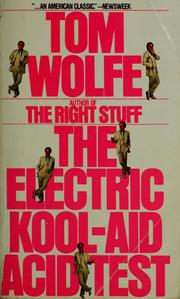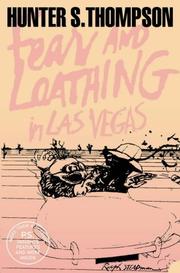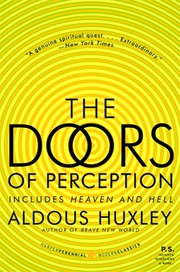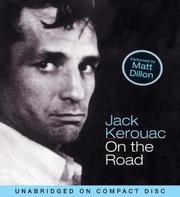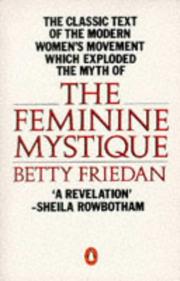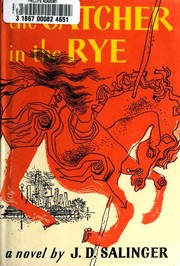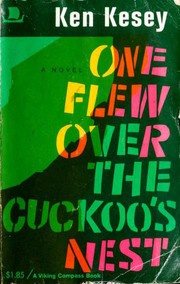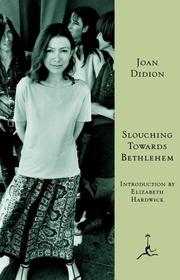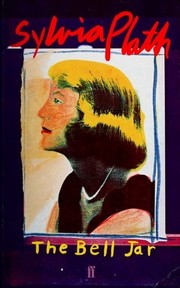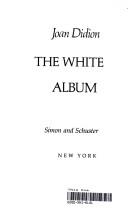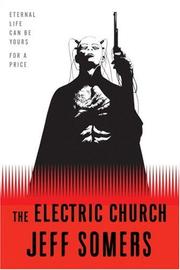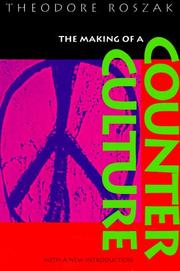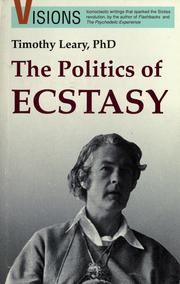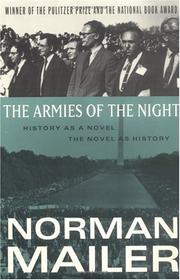The 1960s counterculture was a decade of rebellion, revolution, and profound social change. From the civil rights movement to the anti-war protests, this era was defined by its rejection of mainstream values and its embrace of alternative lifestyles. If you’re fascinated by this transformative period in history, then you’ll want to dive into the 20 best books about the 1960s counterculture. These books offer a captivating glimpse into the individuals, events, and ideas that shaped this extraordinary era. Whether you’re a history buff or simply seeking inspiration, these books will take you on a journey through the tumultuous and exhilarating 1960s counterculture.
Contents
- 1 The Electric Kool-Aid Acid Test
- 2 Fear and Loathing in Las Vegas
- 3 The Doors of Perception
- 4 On the Road
- 5 The Feminine Mystique
- 6 The Autobiography of Malcolm X
- 7 The Catcher in the Rye
- 8 One Flew Over the Cuckoo’s Nest
- 9 Slouching Towards Bethlehem
- 10 The Dharma Bums
- 11 The Bell Jar
- 12 The White Album
- 13 The Electric Church
- 14 The Making of a Counter Culture
- 15 The Politics of Ecstasy
- 16 The Sixties: Years of Hope, Days of Rage
- 17 The Armies of the Night
- 18 The Revolution Will Not Be Televised: Protest Music After Fukushima
- 19 The Free Speech Movement: Reflections on Berkeley in the 1960s
- 20 The 1960s: A Documentary Reader
- 21 Conclusion
The Electric Kool-Aid Acid Test
by Tom Wolfe
The Electric Kool-Aid Acid Test by Tom Wolfe is an exhilarating journey into the wild and vibrant world of the 1960s counterculture. This groundbreaking book about the psychedelic era takes you on a mesmerizing trip with author Ken Kesey and his band of Merry Pranksters as they embark on a cross-country adventure in their colorful bus named “Further”. Through Wolfe’s vivid storytelling and his knack for capturing the essence of the era, you’ll find yourself immersed in a whirlwind of LSD-fueled escapades, mind-expanding experiences, and the rebellious spirit that defined the 1960s counterculture. Prepare to be transported back in time and witness the euphoria, chaos, and radical self-expression that shaped a generation. The Electric Kool-Aid Acid Test is not just a book, it’s a ticket to relive and understand the pulse of the 1960s counterculture like never before.
Fear and Loathing in Las Vegas
by Hunter S. Thompson
Fear and Loathing in Las Vegas by Hunter S. Thompson is a wild and psychedelic journey through the heart of the 1960s counterculture. This mind-bending masterpiece takes readers on a drug-fueled trip through the bizarre and seedy underbelly of Las Vegas, as the author and his attorney search for the American Dream amidst a haze of drugs, madness, and chaos.
The Doors of Perception
by Aldous Huxley
The Doors of Perception by Aldous Huxley is a captivating exploration into the realms of consciousness and the human experience. This groundbreaking book takes readers on a mind-bending journey through the 1960s counterculture, providing a thought-provoking examination of altered states of consciousness and the potential for expanded perception.
On the Road
by Jack Kerouac
On the Road is a legendary novel that immerses readers in the pulsating heart of the Beat Generation, a literary and cultural movement that rebelled against mainstream society in the 1950s and 1960s. Jack Kerouac, the author, transports us into a whirlwind of self-discovery, adventure, and rebellion as he chronicles his bohemian journey across America. With its poetic prose and raw honesty, this book is a captivating exploration of freedom, wanderlust, and the search for meaning in a rapidly changing world.
The Feminine Mystique
by Betty Friedan
The Feminine Mystique, written by Betty Friedan, is a groundbreaking book on the 1960s counterculture that shattered the conventional idea of the “happy housewife.” Published in 1963, it became an instant sensation, igniting a feminist revolution and challenging the societal norms of the time.
The Autobiography of Malcolm X
by Malcolm X and Alex Haley
The Autobiography of Malcolm X is an incredibly powerful and influential book that delves into the life and experiences of one of the most prominent figures of the Civil Rights Movement. Co-authored by Malcolm X and Alex Haley, this book provides a unique and unfiltered perspective on the struggles and achievements of Malcolm X, a key figure in the fight for African American rights during the 1960s.
Malcolm X’s journey from a troubled youth to a prominent civil rights leader is both captivating and inspiring. His experiences as a member of the Nation of Islam, his pilgrimage to Mecca, and his transformation from a separatist to a proponent of racial unity are all explored in great detail. Through his words, readers gain an understanding of the social and political climate of the 1960s counterculture, and the challenges faced by African Americans during that time.
This book goes beyond being just a biography; it serves as a memoir, a history lesson, and a manifesto for change. Malcolm X’s raw and honest account of his life and beliefs forces readers to confront uncomfortable truths about race, identity, and oppression. His words continue to resonate with readers, challenging them to question the status quo and work towards a more just society.
Whether you’re interested in the 1960s counterculture or simply seeking a thought-provoking and enlightening read, The Autobiography of Malcolm X is a must-read. It sheds light on a pivotal period in American history and offers valuable insights into the struggles and triumphs of one of its most influential figures.
The Catcher in the Rye
by J.D. Salinger
The Catcher in the Rye is an iconic novel by J.D. Salinger that captivates readers with its timeless exploration of teenage rebellion and angst. Set in the 1950s, the book delves into the tumultuous mind of Holden Caulfield, a disenchanted teenager who despises the phoniness and conformity of society. As Holden embarks on a journey of self-discovery, he navigates through the complexities of adolescence, alienation, and the loss of innocence.
The Catcher in the Rye is more than just a coming-of-age tale; it is a profound reflection on the human condition and the struggle to find meaning in a world that seems devoid of authenticity. Holden’s rebellious spirit and disdain for societal norms resonate with readers of all generations, making this novel a timeless classic that continues to captivate audiences today.
With its raw and honest portrayal of teenage rebellion, The Catcher in the Rye remains a cultural touchstone, influencing generations of readers and becoming a symbol of the counterculture movement that emerged in the 1960s. This book serves as a poignant reminder of the importance of staying true to oneself, even in the face of societal pressures and expectations.
One Flew Over the Cuckoo’s Nest
by Ken Kesey
One Flew Over the Cuckoo’s Nest by Ken Kesey is a truly mesmerizing book on the 1960s counterculture. Set in a mental institution, this gripping novel takes readers on a wild journey through rebellion, individualism, and the quest for freedom.
The story follows the charismatic Randle McMurphy, a rebellious and unpredictable patient who challenges the oppressive authority of Nurse Ratched. With his larger-than-life personality, McMurphy becomes the catalyst for change, inspiring his fellow patients to question the status quo and embrace their own autonomy.
Kesey’s vivid prose paints a vivid picture of the oppressive and dehumanizing conditions within the institution. Through his masterful storytelling, he explores themes of conformity, power, and the destructive nature of institutionalization.
One Flew Over the Cuckoo’s Nest is not just a book about the 1960s counterculture; it is a powerful examination of the human spirit and the struggle for personal identity. Kesey’s portrayal of the mental institution serves as a metaphor for society at large, providing a scathing critique of the oppressive forces that seek to suppress individuality and creativity.
This 1960s counterculture book challenges readers to question authority, embrace their own authentic selves, and fight against the constraints of a society that seeks to silence them. It is a thought-provoking and unforgettable journey that will leave a lasting impact on all who dare to dive into its pages.
Slouching Towards Bethlehem
by Joan Didion
Slouching Towards Bethlehem is a captivating journey into the tumultuous world of the 1960s counterculture. Joan Didion, a brilliant writer and observer of her time, delves deep into the heart of this transformative era, capturing its essence with her razor-sharp prose.
Through a collection of essays, Didion paints a vivid portrait of the social and cultural landscape of the 1960s. She explores the unconventional lifestyles, radical political movements, and generational conflicts that defined the counterculture. With her keen eye for detail, she uncovers the complexities and contradictions that lie beneath the surface.
Didion’s writing is both intimate and incisive, allowing readers to immerse themselves in the era and understand its significance. She takes us on a journey from the vibrant streets of San Francisco to the seedy underbelly of Los Angeles, revealing the hopes, dreams, and disillusionment of a generation seeking change.
Slouching Towards Bethlehem is not just a book about the 1960s counterculture, it is a time capsule that captures the spirit of an era. Didion’s ability to capture the essence of a moment in time makes this book a must-read for anyone interested in understanding the complexities of the 1960s counterculture and its lasting impact on society.
The Dharma Bums
by Jack Kerouac
The Dharma Bums is a captivating book on the 1960s counterculture that takes readers on a wild journey through the heart and soul of an era defined by rebellion, self-discovery, and spiritual exploration. Written by the legendary Jack Kerouac, this novel is a mesmerizing tapestry of Beat Generation ideals, Zen Buddhism, and the quest for enlightenment.
The Bell Jar
by Sylvia Plath
The Bell Jar by Sylvia Plath is an iconic book that delves into the depths of a young woman’s mind, exploring themes of identity, mental illness, and the confining pressures of society. Set in the 1960s, this novel provides a captivating glimpse into the turbulent era of the counterculture movement, where rebellion and self-discovery were at the forefront. Plath’s hauntingly beautiful prose and vivid descriptions create an immersive reading experience, painting a vivid picture of a young woman struggling to find her place in a world that seems determined to suffocate her. This is not just a book about the 1960s counterculture, but rather a powerful exploration of the human psyche and the universal quest for self-acceptance and liberation.
The White Album
by Joan Didion
The White Album by Joan Didion is a mesmerizing journey through the tumultuous era of the 1960s counterculture. This captivating book delves into the depths of a world filled with rebellion, revolution, and cultural upheaval. Didion’s prose is as sharp as a razor blade, slicing through the myths and illusions of the era to reveal the raw truth beneath. With her keen eye for detail and ability to capture the essence of a moment, Didion paints a vivid portrait of a society on the brink of change.
The Electric Church
by Jeff Somers
The Electric Church by Jeff Somers is a thrilling sci-fi novel that will transport you into a dystopian future where technology and religion collide. Set in a world dominated by an all-powerful organization known as the Electric Church, this book takes you on a wild ride through a society that is eerily reminiscent of the 1960s counterculture.
The Making of a Counter Culture
by Theodore Roszak
The Making of a Counter Culture
Step back in time and immerse yourself in the vibrant spirit of the 1960s counterculture with Theodore Roszak’s groundbreaking book, The Making of a Counter Culture. This captivating work serves as a window into the era, shedding light on the social, political, and cultural upheavals that defined the time.
Roszak explores the various facets of the 1960s counterculture, providing a comprehensive and insightful analysis of the movements, ideas, and individuals that shaped this transformative period. From the anti-war protests to the civil rights movement, from the rise of feminism to the emergence of environmental activism, this book offers a deep dive into the revolutionary forces that challenged the status quo.
With a keen eye for detail and a passionate voice, Roszak delves into the counterculture’s rejection of traditional values, its exploration of alternative lifestyles, and its pursuit of personal liberation. Through his vivid narratives and thought-provoking analysis, he paints a vivid picture of a generation striving for freedom, authenticity, and social justice.
As you turn the pages of this book about the 1960s counterculture, you’ll encounter unforgettable figures such as Timothy Leary, Allen Ginsberg, and Abbie Hoffman, who played pivotal roles in shaping the movement. You’ll witness the evolution of psychedelic art, the birth of communal living, and the birth of a new wave of spirituality that challenged established religious norms.
Ultimately, The Making of a Counter Culture is an essential read for anyone seeking a deeper understanding of the transformative power of the 1960s counterculture. Whether you lived through this era or simply wish to gain insight into a pivotal moment in history, this book will transport you to a time of rebellion, idealism, and hope.
The Politics of Ecstasy
by Timothy Leary
‘The Politics of Ecstasy’ by Timothy Leary is a mind-bending adventure into the heart of the 1960s counterculture movement. This groundbreaking book delves deep into the psychedelic revolution and explores the diverse aspects that shaped the era. Leary, a renowned psychologist and advocate for the exploration of consciousness, takes readers on a journey through the mind-expanding experiences of LSD, psilocybin, and other hallucinogens that were widely embraced during this transformative time. With his charismatic and thought-provoking writing style, Leary analyzes the political, social, and spiritual implications of the 1960s counterculture movement, challenging conventional norms and advocating for personal freedom and self-discovery. ‘The Politics of Ecstasy’ is not just a book about the 1960s counterculture; it is a manifesto for a generation seeking to break free from societal constraints and embrace a new way of thinking. Strap in and prepare to be transported to a time of radical change and introspection. Welcome to the wild ride of the 1960s counterculture revolution!
The Sixties: Years of Hope, Days of Rage
by Todd Gitlin
The Sixties: Years of Hope, Days of Rage by Todd Gitlin is a captivating book on the 1960s counterculture that takes readers on a thrilling journey through one of the most transformative decades in American history. Gitlin masterfully captures the essence of the era, providing a comprehensive and insightful exploration of the book about the 1960s counterculture.
With meticulous research and engaging storytelling, Gitlin delves into the key movements, events, and figures that shaped the the 1960s counterculture book. From the civil rights movement to the anti-war protests, from the feminist movement to the rise of the hippie counterculture, Gitlin paints a vivid picture of a nation in turmoil and transition.
What sets this book apart is Gitlin’s ability to capture the complex emotions and conflicting ideologies of the time. He brings the voices of the era to life, giving readers a firsthand glimpse into the hopes, dreams, and frustrations of those who fought for change. Gitlin’s writing is both scholarly and accessible, making this book on the 1960s counterculture a must-read for history enthusiasts and casual readers alike.
Throughout the pages of this captivating book about the 1960s counterculture, Gitlin navigates the intricacies of a decade defined by hope and rage. He explores the triumphs and failures, the victories and setbacks, and the lasting impact of the movements that emerged during this tumultuous time. Gitlin’s exploration of the the 1960s counterculture book is a testament to the power of collective action and the enduring legacy of those who dared to challenge the status quo.
Whether you are a seasoned scholar of the 1960s or a casual reader looking to gain a deeper understanding of this pivotal era, The Sixties: Years of Hope, Days of Rage is a must-read. Gitlin’s passion for the subject matter is evident on every page, making this book on the 1960s counterculture an engaging and enlightening read that will leave you with a renewed appreciation for the transformative power of activism and the enduring legacy of the 1960s counterculture.
The Armies of the Night
by Norman Mailer
The Armies of the Night is an electrifying and immersive book on the 1960s counterculture that takes readers on a gripping journey through one of the most tumultuous periods in American history. Written by Norman Mailer, this groundbreaking work is not just a book about the 1960s counterculture, but a vivid firsthand account of the events that shaped it.
Mailer, a prominent writer and social critic, delves deep into the heart of the 1960s counterculture and captures the essence of the era with his evocative prose. The book chronicles his involvement in the historic March on the Pentagon in 1967, a massive anti-war protest that brought together activists, intellectuals, and ordinary Americans in a powerful display of dissent.
Through his personal experiences and observations, Mailer offers a unique and intimate perspective on the 1960s counterculture. He explores the motivations and ideologies of the protesters, the clashes with law enforcement, and the underlying tensions that permeated society during this time of radical change.
What sets The Armies of the Night apart is Mailer’s innovative and daring narrative style. He combines traditional journalism with elements of fiction, blurring the lines between fact and imagination. This approach infuses the story with a sense of immediacy and intensity, drawing readers into the heart of the action.
Mailer’s book on the 1960s counterculture is not merely a historical account, but a powerful exploration of the human spirit and the desire for social change. It captures the essence of a generation that sought to challenge the status quo, to question authority, and to reshape the world in their own image.
The Armies of the Night is an essential read for anyone interested in the 1960s counterculture and its lasting impact on American society. With its gripping narrative, insightful analysis, and thought-provoking themes, this the 1960s counterculture book is a testament to the power of activism and the enduring spirit of rebellion.
The Revolution Will Not Be Televised: Protest Music After Fukushima
by Noriko Manabe
The Revolution Will Not Be Televised: Protest Music After Fukushima by Noriko Manabe is not your average book about the 1960s counterculture. It dives deep into the captivating world of protest music and explores its powerful impact in the wake of the Fukushima disaster. Manabe’s meticulous research and engaging writing style transport readers to a time when music became the voice of a generation, echoing the sentiments of those affected by the tragedy. This book is a must-read for anyone interested in the 1960s counterculture and the role that music played in shaping a movement.
The Free Speech Movement: Reflections on Berkeley in the 1960s
by Robert Cohen
The Free Speech Movement: Reflections on Berkeley in the 1960s by Robert Cohen is a captivating book that delves into the tumultuous era of the 1960s counterculture. This thought-provoking piece of literature provides a deep reflection on the events that unfolded at the University of California, Berkeley, during that time.
The 1960s: A Documentary Reader
by John C. McWilliams
The 1960s: A Documentary Reader by John C. McWilliams is an immersive journey into the revolutionary era of the 1960s counterculture. This captivating book delves deep into the heart of one of the most transformative periods in American history, exploring the diverse voices and perspectives that shaped the social and political landscape of the time.
Conclusion
In conclusion, the 1960s counterculture was a transformative period in history, and these 20 books about the 1960s counterculture provide valuable insights into the era. From exploring the political movements and social changes to examining the music and art that defined the time, these books offer a comprehensive look at this pivotal period. Whether you lived through the 60s or are simply interested in learning more about this remarkable era, these books are essential reads. So, grab a copy, immerse yourself in the spirit of rebellion, and prepare to be transported back to the 1960s counterculture.
